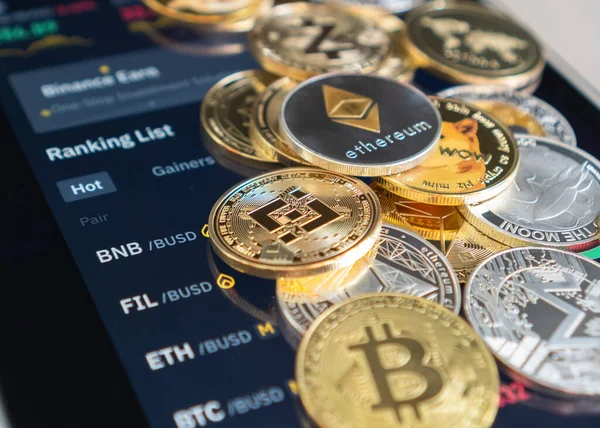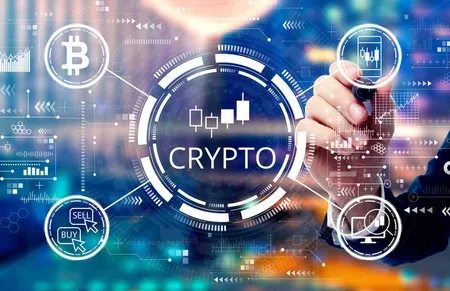Key Altcoins to Watch: Insights for 2024 Ahead
Top 5 Altcoins to Monitor in 2024: Insights and Predictions
Understanding the Altcoin Landscape for 2024 Predictions
As we embark on 2024, the altcoin market promises to be a dynamic space, offering a wealth of opportunities and challenges. With Bitcoin frequently dominating headlines, altcoins are often overshadowed, yet they play a crucial role in the broader cryptocurrency ecosystem. To understand the potential of various altcoins this year, investors must consider market trends, technological advancements, and regulatory developments that could impact their growth trajectories.
The altcoin landscape is characterized by a broad array of projects, each with unique functionalities and use cases. From DeFi protocols to NFTs and new consensus mechanisms, altcoins are diversifying the blockchain universe. In 2024, we can expect to see innovative projects emerging, leveraging the latest technological advancements to solve real-world problems. This evolution is crucial for investors seeking to identify which altcoins might emerge as leaders in their respective niches.
Moreover, the regulatory environment is evolving. Governments worldwide are beginning to take a closer look at cryptocurrencies and blockchain technology, which could lead to increased scrutiny but also validation of the space. Altcoins that can adapt to regulatory changes while maintaining their core functionalities will likely be better positioned for sustained growth.
Understanding the socio-economic factors influencing the adoption of altcoins will also be key. The rise of decentralized finance (DeFi) and non-fungible tokens (NFTs) has generated substantial interest, drawing in both retail and institutional investors. As these trends continue, altcoins that can offer innovative solutions or provide unique value propositions will stand out in a crowded market.
The Rise of Altcoins: Key Trends to Watch This Year
In 2024, several key trends are expected to shape the altcoin market. First and foremost is the continuation of the DeFi revolution. With numerous projects seeking to disrupt traditional financial systems, the demand for altcoins that facilitate lending, borrowing, and yield farming is likely to grow. This trend will drive investment into platforms that enable peer-to-peer transactions and decentralized financial services.
Secondly, the rise of layer-2 scaling solutions is set to enhance transaction speeds and reduce costs for users. As Ethereum continues to face congestion issues, alternative platforms offering efficient layer-2 solutions will become increasingly relevant. This is particularly true for altcoins like Polygon and Arbitrum, which aim to alleviate the strain on blockchain networks while providing seamless user experiences.
Moreover, environmental sustainability will play a pivotal role in the altcoin landscape. As concerns regarding energy consumption rise, projects that utilize eco-friendly consensus mechanisms (like proof-of-stake) will attract scrutiny from both investors and regulators. Altcoins that prioritize sustainability in their infrastructure will be well-positioned to gain market traction.
Lastly, the integration of artificial intelligence (AI) in blockchain technology is another trend to monitor. As AI tools begin to complement blockchain functionalities, altcoins leveraging AI for data analysis, trading automation, and security enhancements will likely emerge as critical players in the market.
Spotlight on Ethereum: Can It Maintain Its Dominance?
Ethereum has long been the leading altcoin, serving as the foundation for various decentralized applications and smart contracts. However, as new contenders enter the market, questions arise about its ability to retain dominance, especially with the ongoing competition from other blockchain platforms. In 2024, Ethereum’s performance will heavily depend on its ability to address scalability and high gas fees that have plagued its network.
The recent transition to Ethereum 2.0, which introduced a proof-of-stake consensus mechanism, aimed to alleviate these issues, but challenges remain. If Ethereum can successfully implement further upgrades and improve user experience, it may solidify its position as the go-to platform for developers and enterprises alike. Investors will be keenly watching Ethereum’s roadmap and its ability to attract new projects and partnerships.
Despite the challenges, Ethereum’s robust developer community and established user base provide significant advantages. It continues to dominate the NFT and DeFi sectors, with numerous projects built on its network. As these sectors expand, Ethereum’s integral role could keep it at the forefront of the altcoin market, provided it can adapt to the evolving demands of users.
However, the competition is fierce. New smart contract platforms like Solana and Avalanche are quickly gaining traction, attracting developers with their lower fees and faster transaction times. Ethereum will need to innovate continuously to fend off these challengers and maintain its competitive edge.
Exploring Solana’s Potential for Growth in 2024
Solana has emerged as one of the most promising altcoins, boasting lightning-fast transaction speeds and minimal fees. Its unique architecture allows it to process thousands of transactions per second, positioning it as a formidable competitor in the blockchain space. As we move into 2024, Solana’s ability to capitalize on its technological advantages could lead to significant growth opportunities.
The DeFi and NFT sectors are increasingly recognizing Solana as a viable alternative to Ethereum. The ecosystem has seen explosive growth, with numerous projects launching on its platform. This trend is expected to continue, as developers seek faster and more cost-effective solutions. Solana’s ability to attract and retain high-profile projects will be a key factor in its success this year.
Moreover, Solana’s community engagement and strong developer support are vital. The platform has fostered a vibrant environment for innovation, with numerous hackathons and funding initiatives designed to bolster new projects. This strategic approach enhances its ecosystem, drawing more users and developers, which is crucial for long-term sustainability.
While Solana’s growth potential is evident, challenges remain. The platform has faced network outages in the past, raising concerns about reliability and security. Addressing these issues and ensuring network robustness will be critical for Solana as it seeks to solidify its position as a leader in the altcoin space.
Decentralized Finance: The Case for Cardano’s Resilience
Cardano has long been regarded as a strong player in the altcoin arena, particularly within the realm of decentralized finance (DeFi). With its focus on sustainability and a scientific approach to development, Cardano aims to provide a secure and scalable platform for DeFi applications. As we look ahead to 2024, Cardano’s resilience will be tested, particularly as the DeFi sector continues to evolve.
One of Cardano’s notable strengths is its rigorous peer-reviewed development process, which distinguishes it from many of its competitors. This meticulous approach instills confidence among investors and developers alike, as it ensures that the platform is built on a solid foundation. In 2024, this could translate into increased trust and adoption, especially in the DeFi sector.
Additionally, Cardano’s commitment to interoperability could position it favorably as decentralized applications proliferate. By focusing on creating an ecosystem that facilitates collaboration between different blockchains, Cardano is setting itself up for sustained relevance in a competitive market. As more projects seek cross-chain solutions, Cardano could emerge as a preferred platform.
However, challenges such as competition from more established DeFi platforms must not be overlooked. As new projects continue to launch and gain traction, Cardano will need to demonstrate its value proposition effectively. Continuous development and community engagement will be essential for maintaining its resilience and relevance in the altcoin landscape.

Market Speculations: What to Expect from Polkadot’s Future
Polkadot has carved a unique niche in the altcoin market with its focus on interoperability and scalability. By enabling different blockchains to communicate and share information seamlessly, Polkadot aims to create a more cohesive blockchain ecosystem. As we enter 2024, the market will closely observe how Polkadot evolves and the impact it may have on the broader crypto landscape.
One of the key features of Polkadot is its parachain technology, which allows multiple blockchains to operate in parallel. As more projects secure parachain slots, the ecosystem is expected to grow, fostering innovation and collaboration. This growth could attract significant investment and developer interest, potentially leading to a substantial increase in the value of Polkadot’s native token, DOT.
Moreover, the ongoing development of the Polkadot ecosystem will be crucial. With a strong emphasis on community governance and decentralized decision-making, Polkadot has the potential to adapt quickly to changing market conditions. This adaptability could bolster its resilience against market fluctuations and position it favorably among investors.
However, competition in the interoperability space is fierce. Other platforms, such as Cosmos and Avalanche, are also vying for dominance, which could impact Polkadot’s market share. For Polkadot to thrive, it must continue to innovate and clearly communicate its unique advantages to attract and retain users and developers.
| Altcoin | Key Features | Growth Potential |
|---|---|---|
| Ethereum | Smart contracts, DeFi, large developer community | Moderate to High |
| Solana | High transaction speed, low fees, scalable | High |
| Cardano | Peer-reviewed development, focus on sustainability | Moderate to High |
| Polkadot | Interoperability, parachain technology | High |
In conclusion, 2024 holds significant promise for altcoins as they continue to evolve and shape the cryptocurrency landscape. Investors looking to navigate this dynamic environment should closely monitor the developments of key players like Ethereum, Solana, Cardano, and Polkadot. As the altcoin market grows, so too will the possibilities for innovation and investment, making this an exciting year for both seasoned investors and newcomers alike.










I think altcoins are too risky, but they might have potential for big gains.
Integration of AI in blockchain is the future. More altcoins should do this.
I’m new to altcoins. How do I pick the right one to invest in?
Why do we need so many altcoins? Bitcoin is enough for me.
Ethereum 2.0 is not enough. They need more upgrades.
Regulatory changes could really hurt some of these altcoins.
I support eco-friendly altcoins that use less energy.
Ethereum needs to fix its gas fees or it will lose to Solana and others.
DeFi is interesting, but it’s too complicated for the average person.
Altcoins could disrupt traditional finance, but regulations will be tough.